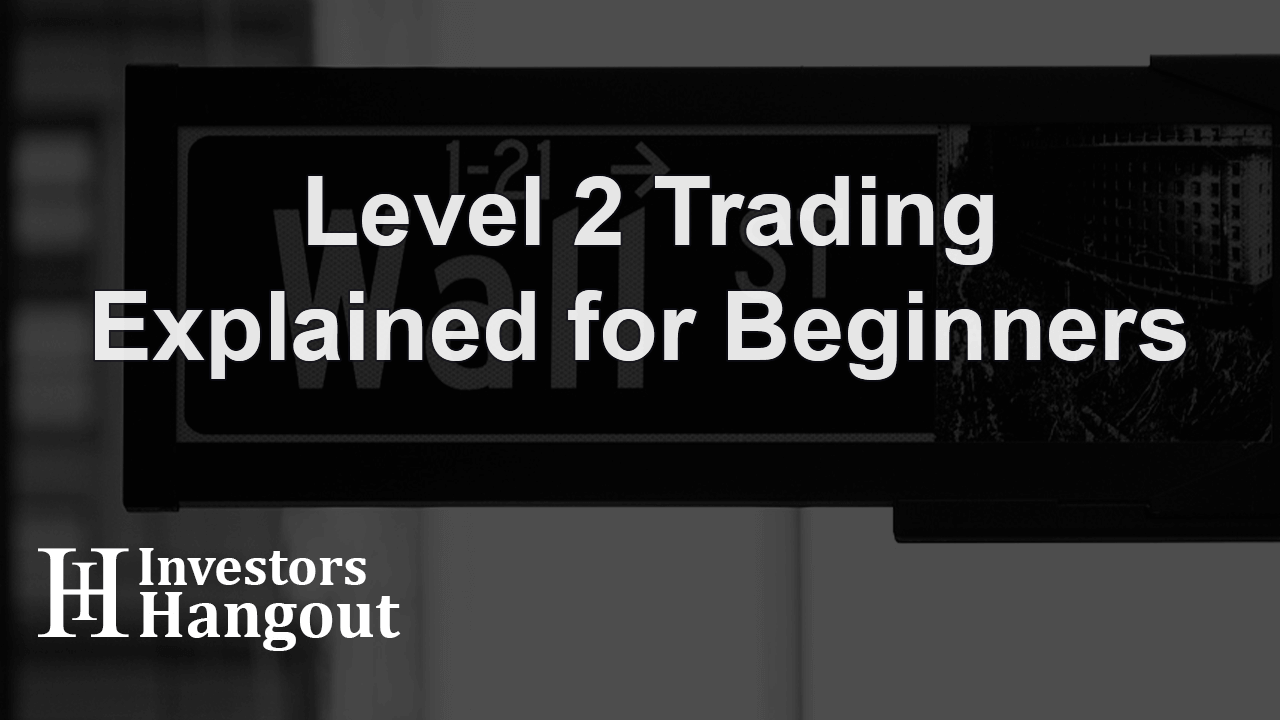Level 2 trading service normally has some sort of fees and require a membership. This service shows quote rates and sizes. While also revealing ask costs and sizes.
In addition, Level 2 trading can offer you with important insights into the belief of financiers and traders who are purchasing or offering a specific stock, along with the prospective instructions of the stock's rate motion in the future. By comprehending Level 2 trading, you can acquire a much better grasp of the marketplace characteristics that can affect the opening cost of a stock, making it a vital tool for amateur stock traders.
Can you supply more details about Level 2 Trading?
NASDAQ's Level 2 trading can be referred to as a thorough guide to the stock exchange, providing a comprehensive overview of the very best quote and ask rates from different market individuals. This resource offers important details on the motions and costs of stocks, enabling you to make educated choices, particularly as a novice in day trading. According to Investopedia, Level 2 trading uses a broad point of view on the stock exchange, providing you a much better understanding of financier and trader interests.
"Level 2 Quote: A Revised Version"
per share. (NOTE: stock shares are represented in hundreds, so 50 x 100 = 5,000 shares)
The people taking part in the video game are described as gamers.

In the world of day trading, the main lobbyists in the monetary markets can be divided into 3 unique groups:
ECNs, likewise referred to as electronic interaction networks, are automated platforms that enable people, consisting of expert financiers and institutional traders, to take part in stock exchange trading.
Market makers, likewise referred to as MMs, play a crucial function in offering liquidity to the marketplace. They are accountable for buying and selling stocks when there is an absence of need or supply, consequently producing a steady market environment. By doing so, they allow traders to buy and sell securities with ease, promoting a healthy and practical market. The name "market maker" shows their function in developing and sustaining the marketplace.
It is not uncommon for online stock brokers to offer their orders to wholesalers, who are typically referred to as "order circulation companies." These companies then perform the orders on behalf of the broker or retail trader.
Additionally, every individual in the market is designated a distinct 4-letter identifier, which is normally shown within the quote itself. These IDs are utilized to recognize particular banks, such as DBAB for Deutsche Bank Alex Brown, FBCO for Credit Suisse First Boston, GSCO for Goldman Sachs, JPHQ for JPMorgan, NMRA for Nomura Securities, and UBSW for UBS Securities.
The Mysterious "Ax": Uncovering Its Meaning and Significance
The entity referred to as "the Ax" holds substantial impact over the rate motions of a specific stock, making it the most vital market maker. Observing Level 2 trading activity for a couple of days will expose its identity. This market maker stands apart for its capability to regularly form stock rate actions, making it a popular option amongst day traders who look for to increase their possibilities of success when buying and selling securities and stocks.
Check out the advantages of using Level 2 Trading for your financial investment methods.
To acquire insight into the existing circumstance of a particular stock, Level 2 estimate can offer important details.
"Why Choose Level 32 Trading? 4 Compelling Reasons"
- Level 2 trading offers insight into market activities, highlighting uncommon patterns and informing you to circumstances where big financiers are trying to hide their stock purchases.
- Level 2 trading supplies info about the particular kind of stock trading that is taking place.
- When a more powerful rate pattern is pertaining to an end, Level 2 trading can assist recognize the shift by evaluating the activity taking place in between the quote and ask costs.
- Utilizing the Ax for Level 2 trading supplies real-time insight into rate patterns, consequently increasing your possibility of carrying out effective trades.
Investors Hangout is the place to discuss your day trading needs with like-minded investors. Visit our website today to learn more and to claim your 100% Free unlimited account!
